Reports of phantom clowns in the United States can be traced back decades and are a form of social panic. They reflect age-old fears that are dressed up in new garb—literally.
During late August 2016, police in Greenville, South Carolina, were besieged with reports of children being stalked by clowns. In some instances, these nefarious figures reportedly tried to lure youngsters into the woods with offers of candy and money. Despite the best efforts of law enforcement the clowns seemed to vanish into the shadows and no arrests were made.1 The sightings and rumors began at the Fleetwood Manor apartment complex on August 21st. Soon adults were spotting clowns. There were reports of clowns clanging chains, clowns whispering from the woods, clowns playing with green laser lights, and clowns seen running away from homes. There were even reports of clowns firing guns and clowns living in an abandoned shack in the woods. Police investigated the boarded up building but it showed no signs of habitation, and no shell casings were found where they had reportedly fired weapons. In short, there was no tangible evidence to corroborate any of the reports.2
On September 5th, clowns were spotted by children about 150 miles to the northeast in Winston-Salem, North Carolina.3 By the following day, there were reports of mysterious clowns as far away as Columbus, Ohio, where a schoolboy claimed to have been chased by a knife-wielding clown. Authorities were unsure whether it was a hoax, pranksters, an attempted robbery or a thwarted abduction.4 Once again, there was no evidence to corroborate the story.
At first glance, it would appear that a deranged individual is intent on abducting or scaring children. Yet, accounts of phantom clowns stalking children have been recorded since at least 1981, when clusters of reports appeared in several American cities including Boston, Omaha, Kansas City, and Denver.5 Numerous outbreaks have since been recorded throughout North America and Europe.6
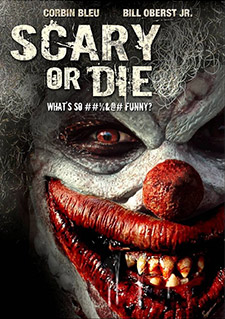
Poster for the movie Scary or Die, released in 2012. The IMDb lists no less than 186 movies, documentaries, and TV series episodes involving bad clowns, most of them since the 1980s.
While every report of strangers stalking children should be taken seriously, in the absence of concrete evidence these stories should be treated with skepticism. Stalking clown folklore appears to be part of the “Stranger Danger” moral panic of the 1980s. Moral panics are periods of intense fear that crop up from time to time, and involve exaggerated threats from perceived evil-doers—either real or imagined. A classic example is the current fear of Muslims and Middle Eastern refugees in Europe and North America, where they are often stereotyped as terrorists and subversives. Some moral panics are entirely imaginary, such as the hunt for witches in the vicinity of what is now Salem, Massachusetts in 1692.
When one examines the reports of phantom clowns, a curious pattern emerges: they are almost never caught. There is also a lack of tangible evidence. All police have to go on is eyewitness testimony, which is notoriously unreliable. Most witnesses are children, who are vulnerable to peer pressure and being asked leading questions. Another curious aspect is that the children always seem to get away. On the one hand, the clowns are extremely adept at making their getaway. On the other hand, they appear to be totally incompetent at nabbing their prey.
From Funny to Fearful: The Changing Image of Clowns
Someone once joked that from a public perception standpoint there is only one major difference between a rat and a mouse: a good publicist. Perception is reality, because reality is socially constructed and there is no more powerful a publicist in modern society than the mass media. It is both a reflection of popular culture, and a beacon light of change. So how did clowns go bad and what role has the media played?
Andrew Stott, a professor of English at SUNY Buffalo, has studied the transformation of clowns, from fun-loving to feared. He found that the popular portrayal of clowns began to turn bad near the end of the 19th century in opera and theater. However, it was not until the 1930s and 40s that they took on a downright sinister persona in the sideshow debauchery and terror of the “dark carnival” that arose with the decline of traveling tent circuses.7 (See also Benjamin Radford’s Bad Clowns.)8 The image of the clown as a sinister, morally perverted figure remained in the public imagination during this period. In 1947, science fiction writer Ray Bradbury published a series of stories around this theme in his book aptly titled, Dark Carnival.9 But with the appearance of television during the mid-20th century, the persona of clowns changed from figures that were often associated with adult entertainment, to the almost exclusive domain of children. By the 1960s, The Howdy Doody Show featuring Clarabell the Clown, and Bozo the syndicated clown, were both enormously popular. Linda McRobbie writes that “Once their made-up persona became more associated with children, and therefore an expectation of innocence, it made whatever the makeup might conceal all the more frightening—creating a tremendous mine for artists, filmmakers, writers and creators of popular culture to gleefully exploit to terrifying effect.”10
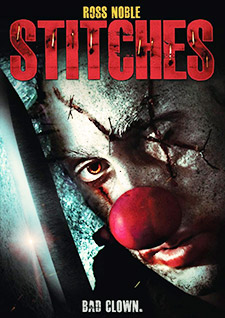
Poster for the movie Stitches, released in 2012. The creepy clown movie genre is still going strong.
Outbreaks of phantom clowns coincide with the dark side of clowns that began to dominate American and European popular culture during the 1980s with the release of a series of creepy clown movies and books. Perhaps most influential was Stephen King’s chilling 1986 horror novel It, involving a homicidal clown, and films such as Killer Clowns From Outer Space (1988) and Clownhouse (1989). In 1990, there was an entire TV mini-series based on It. The IMDb movie database lists no less than 186 movies, documentaries, and TV series episodes involving bad clowns, most of them since the 1980s.11 Thanks to these images, the association between clowns and evil is ingrained in popular culture. Clowns were natural candidates for evil because they possess unnatural, exaggerated features that render them not quite human. They are what anthropologists refer to as “the Other.”
There is an interesting pattern to clusters of creepy clown reports, which typically feature the following elements: A dramatic initial claim or rumor followed by saturation media coverage. Local residents begin to scrutinize their environment for evidence of this new threat, and begin to redefine ambiguous stimuli within their new stalking clown mind set. This gives rise to new media and social media reports, which in turn generate more publicity and anxiety. The subsequent anxiety and uncertainty are ideal for incubating rumors. A similar pattern is involved in generating sighting clusters of chupacabras, Bigfoot, and the Loch Ness Monster. That is why these subjects belong to the realm of folklore as they break out in waves, are unwittingly driven by journalists and social media—and proof of their existence is never found.
Why are communities temporarily overwhelmed by these scares? They appear to be part urban legend, part moral panic, part rumor-panic. As such they reflect prevailing fears. These outbreaks of bad clowns appear to be an outgrowth of the 1980s “Stranger Danger” moral panic which function as cautionary tales. “Don’t go near the woods on your way home from school or the clowns could get you.” Clusters of creepy clowns are a matter best dealt with by folklorists, sociologists and social psychologists, not law enforcement. They are the modern-day equivalent of the boogey man. ![]()
References
- Rogers, Katie. 2016. “Creepy Clown Sightings in South Carolina Cause a Frenzy.” The New York Times, August 30; Tan, Avianne. 2016. “Reports of Clowns Trying to Lure Kids into Woods in South Carolina Prompt Investigation.” ABC News, August.
- Siemaszko, Corky. 2016. “Another Creepy Clown Incident Reported in Ohio.” September 1. NBC News; Ramirez, Patricia. 2016. “South Carolina Clown Sightings…” The Inquisitor, September 4.
- Saylor, Jennifer. 2016. “Disturbing Clown Sightings Continue, Spread to Winston-Salem.” News 13, WLOS-TV (Asheville, NC), September 6.
- Siemaszko, 2016, op cit.; Ramirez, 2016, op cit.
- Callahan, Christopher. 1981. “Beware Clown, Pupils Told.” Boston Globe, May 7, p. 21; Coleman, Loren. 1983. Mysterious America. New York: Faber & Faber, pp. 211–215.
- Brunvand, Jan Harold. 2001. Encyclopedia of Urban Legends. Santa Barbara, CA: ABC-CLIO, pp. 314–15; Murray, Rheana. 2014. “Mysterious Clowns Terrorizing California City.” October 13, 2014. ABC News.
- Stott, Andrew. 2012. “Clowns on the Verge of a Nervous Breakdown: Dickens, Coulrophobia, and the Memoirs of Joseph Grimaldi.” The Journal for Early Modern Cultural Studies 12(4):3–25. See p. 5.
- Radford, Benjamin. 2016. Bad Clowns.
- Bradbury, Ray. 1947. Dark Carnival. Sauk City, WI: Arkham House.
- McRobbie, Linda R. 2013. “The History and Psychology of Clowns Being Scary.” Smithsonian.com, July 31.
- “Clown Horror Movies”
About the author
Dr. Robert Bartholomew is a medical sociologist who holds a Ph.D. from James Cook University in Australia. He is an authority on culture-specific mental disorders, outbreaks of mass psychogenic illness, moral panics and the history of tabloid journalism. He has conducted anthropological fieldwork among the Malays in Malaysia and Aborigines in Central Australia. His most recently books are A Colorful History of Popular Delusions with Peter Hassall and American Hauntings: The True Stories Behind Hollywood’s Scariest Movies—From Exorcist to The Conjuring with Joe Nickell.
This article was published on September 14, 2016.







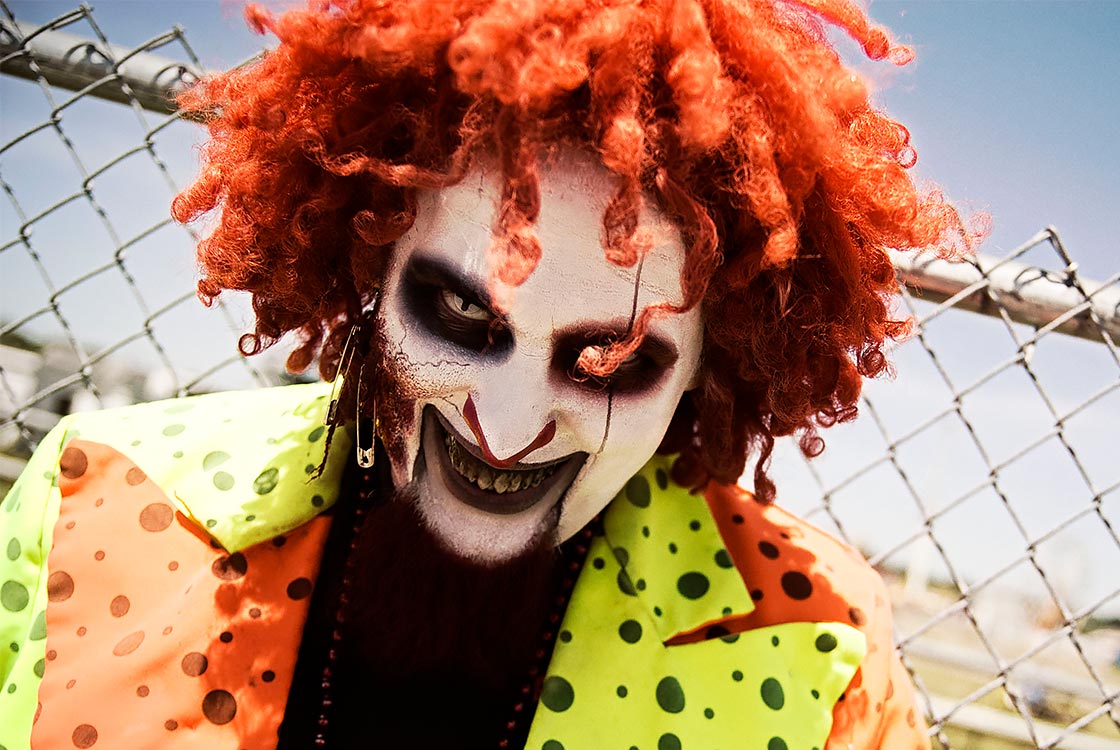



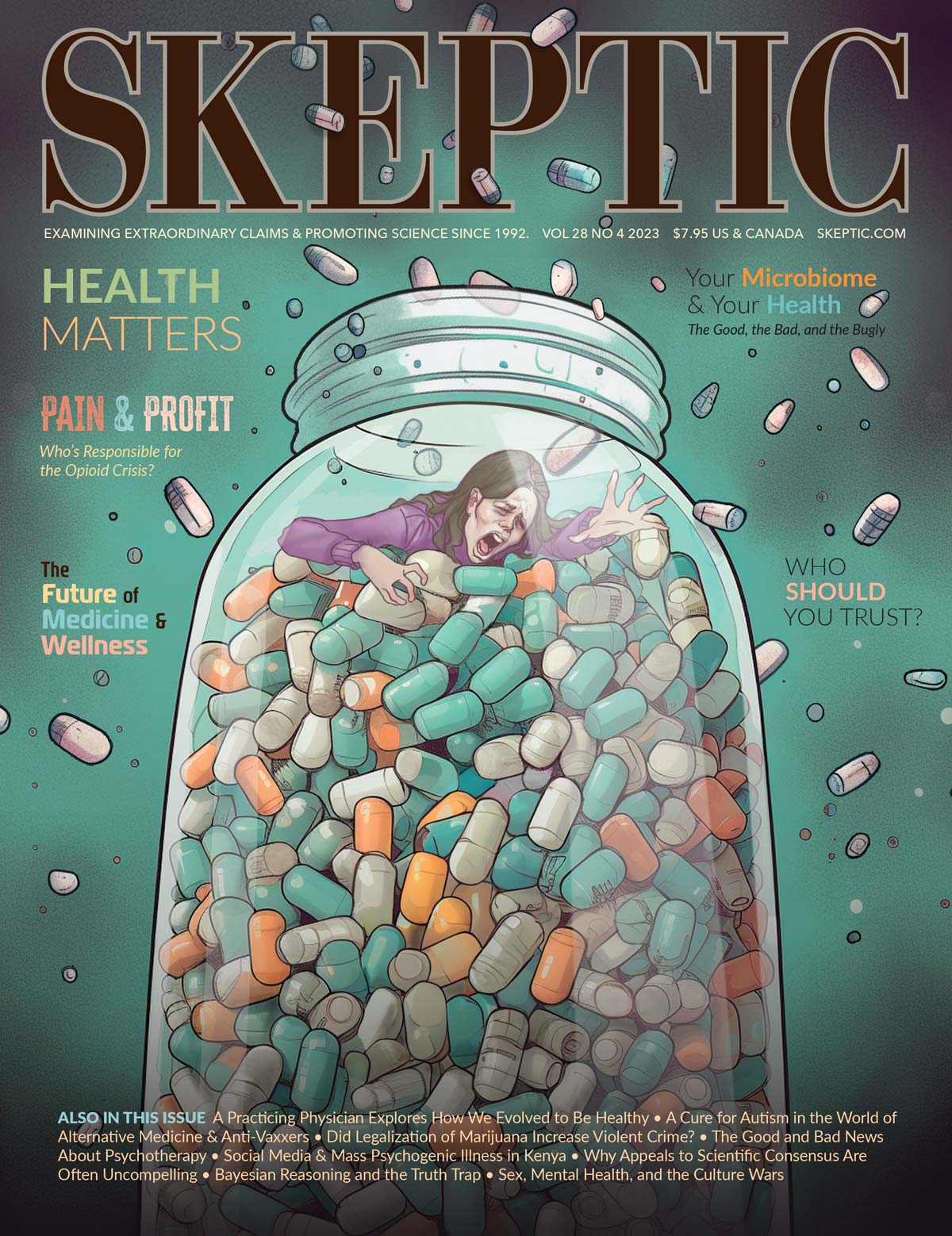
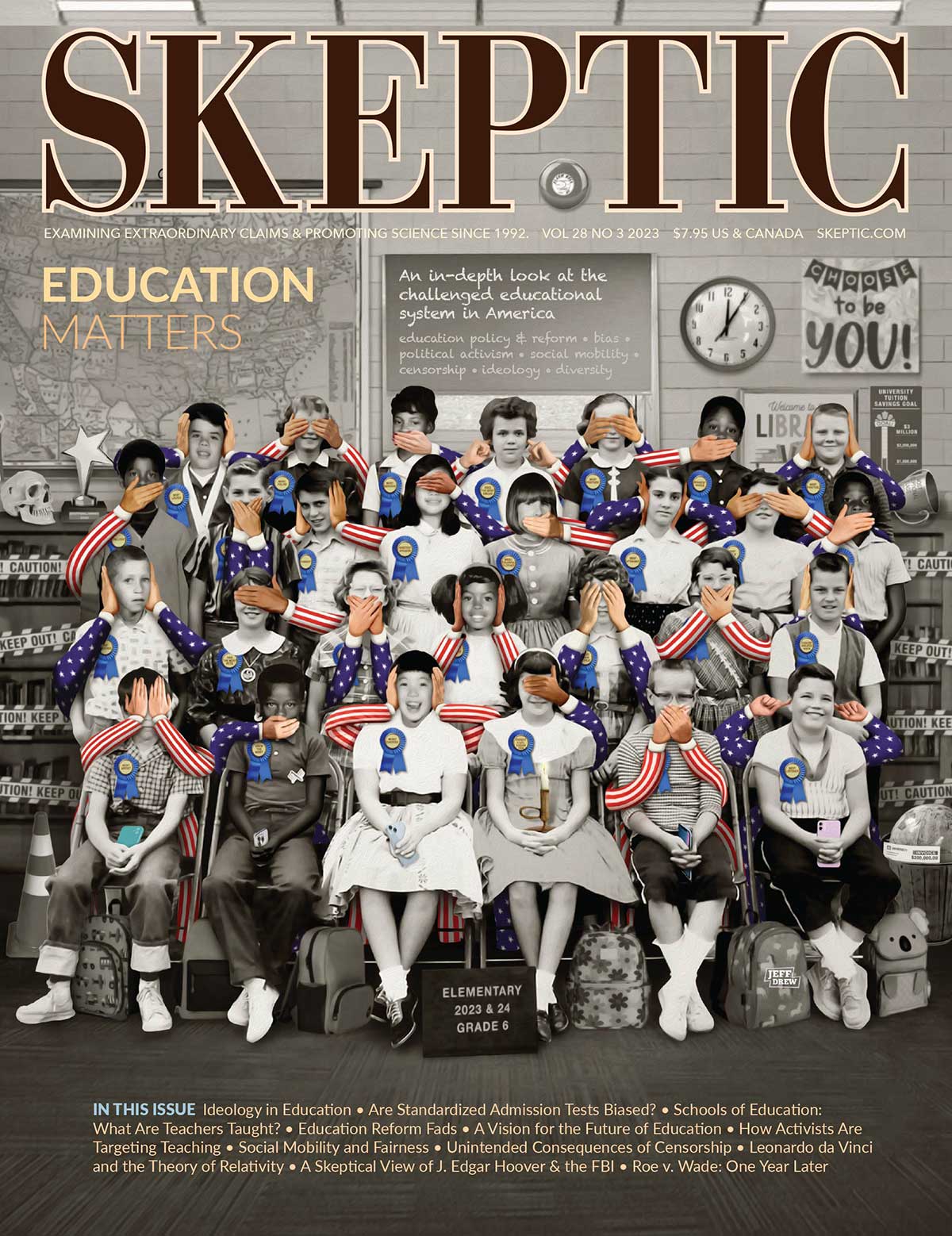

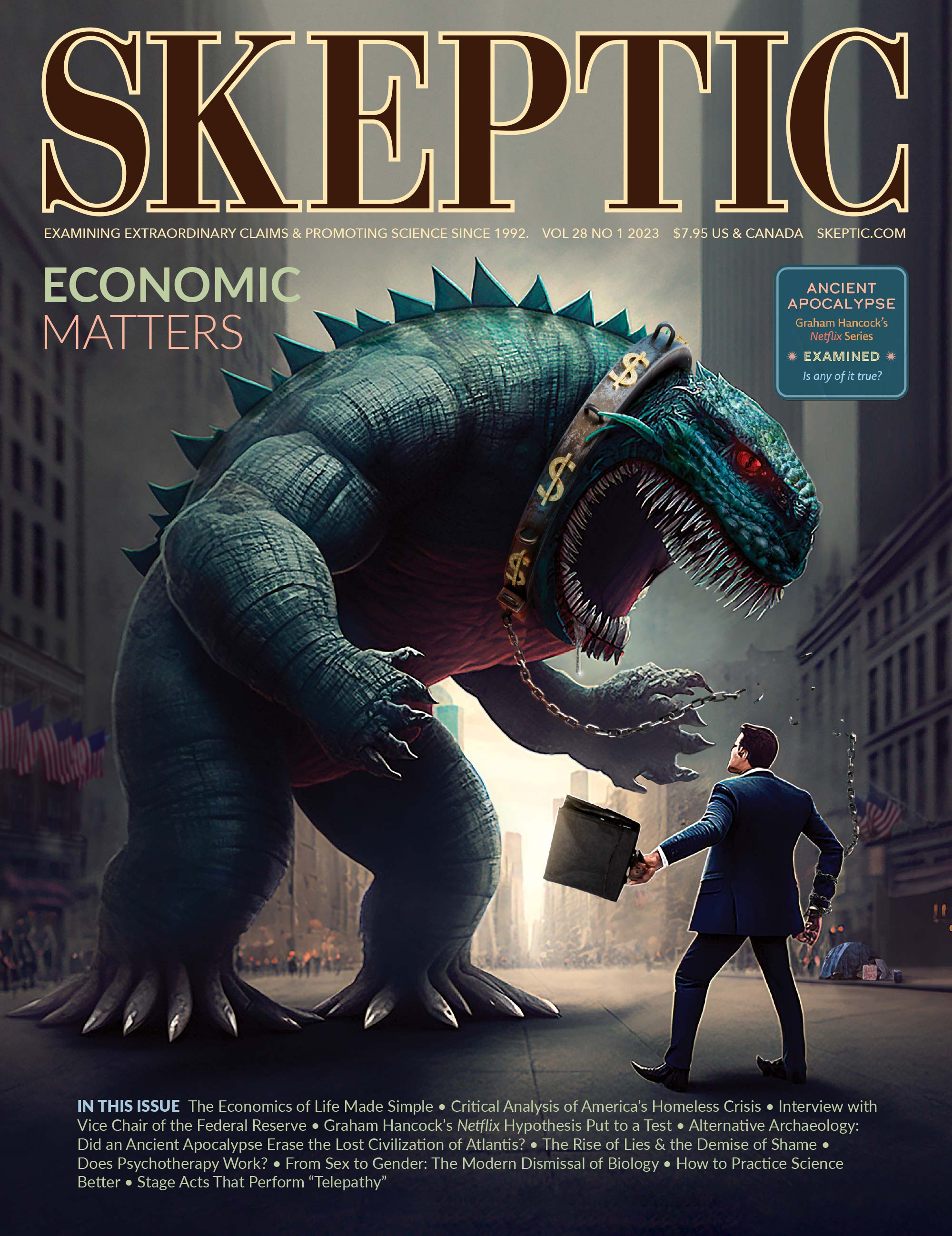
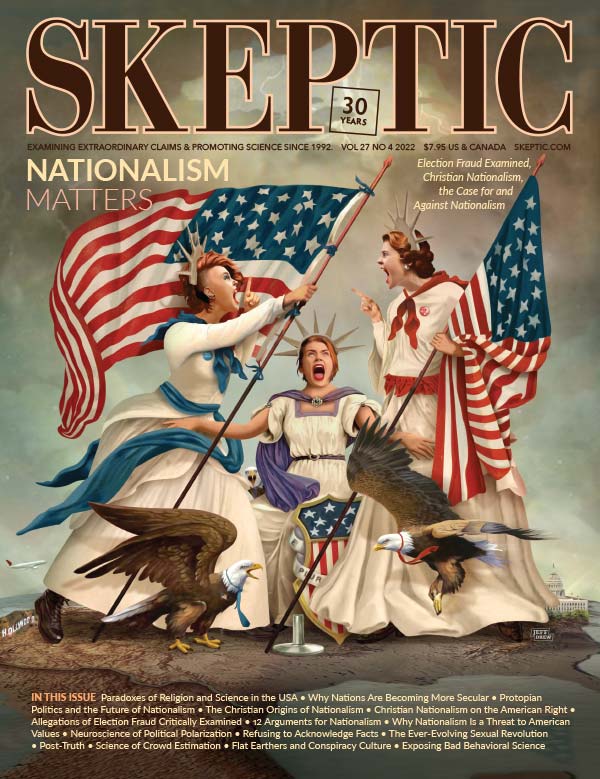
I think this is all a joke
There is also an obvious comparison to demons, which were believed to be ‘natural’ creatures that could very well nab children.
Of course sometimes they’re real;-http://www.theatlantic.com/international/archive/2013/10/northampton-clown-unmasked/309900/
Perhaps it is SkeleTony who doesn’t quite grasp the subtleties of the argument. From the comfort of their ivory towers, social constructivists and social relativists will excuse the actions of (almost) any identifiable group. My enjoyment of living during the 1970s and 1980s in a part of London mostly populated by Irish people did not prevent some apprehension when I travelled to those parts of the city favoured as targets by IRA bombers – who perhaps set out from the same part of town as I did. Personally, I abhor those who readily kill others for a cause. But my desire for peace seems a cultural trait ironically deemed less worthy by those relativists who excused the bombings. Moreover, while percentages are minuscule for any particular individual suffering (unless they live in a Daesh controlled area) it is the case now that world-wide nearly all atrocities committed by one self-identified group on those not a member are in the name of Islam. And most of the victims are Muslim!
Placidly accepting come what may would make those of us in the West an even softer target.
Wow, second time for the same commenter! You still misread. I’m beginning to think it’s a habit with you. Maybe you draw a conclusion, and then read? Will you do that with this one, too? Anyway, my point is that a researcher trying to explain or understand something is not the same as “excusing” it. Understanding is not excusing, condoning, justifying or anything like that. How can you deal with something you don’t understand? Social science can be a valuable addition to our understanding of what goes on around us. Why do you imagine that ignorance is a good way to deal with things?
Apologies for delay in responding, a social construct intervened.
Well at least you’ve not suggested I’m a brown shirt – a usual retort from those blinded by their own moral certitude.
Lots did excuse and justify the IRA bombings of London; I whiled away many an hour arguing with some who happened to be friends. My fear, much mocked, was that accepting as legitimate one group’s actions in killing ‘innocents’ (yes, I recognize innocence is a matter of degree or perception) would lead it to being a weapon of choice for anyone with a grudge against society. Another unwarranted fear? My impression was that much white middle-class guilt drove appeasement.
To those all too ready from their position of assumed moral superiority to castigate motes seen in the eyes of others I admit my readiness to instant disdain. As in your case Ken, those who assume a leftist bent often resort to ad hominem attack because why waste arguments on the obviously ignorant. Well in my ignorant previous rambles I’m not sure that I deplored the search for evidence though I may have been guilty of exasperation with those who misuse (the extreme version of) the Copenhagen Interpretation to suggest society preceded reality and humans.
Happy Daze
I would add to this that Daesh is not the only problem that is connected to increased Muslim presence in the West. Large percentages of western born Muslims approve of laws to punish cartoonists or other “insults” or criticism of Islam. Unlike religions most Americans are familiar with, Islam recognizes no distinction between religion, government and criminal justice.
Also, if we have created a great country there’s nothing wrong with making sure that people who want to immigrate have values that are compatible with our values and to prevent entry of people who actually despise our values and wish to replace them with something vastly different. Islam’s Koran and Hadiths are instruction manuals for a long game. Look at the history of lndia, Pakistan & Bangladesh – which all used to be India.
So to sum up: maniacal clowns may (or may not) be either an urban legend, a trend among pranksters, or some combination of both, while any Muslims you might encounter may (or may not) be jihadists.
Who says the social sciences lack rigor??
can’t resist
Rigor ?
Rigor ???
We don’t got to show you no steenkin’
Rigor !!!
Parody of Treasure of Sierra Madre
v.v Jazzbeaux Collins
Did this article really just compare the fear of Muslim terrorism to the fear if clowns? Wow. Last I checked there weren’t thousands upon thousands being murdered by clowns. Sure it’s still a tiny chance of Muslim terrorism happening in the US right now, but that doesn’t change the very real fact that thousands are being killed around the world, and there are billions of Muslims, so thus raises the odds considerably. Even if the fear of some is exaggerated here in America, that doesn’t change the global issue. Pull your head out of the sand and research the vast real footage of all of this happening. It just boggles the mind that people want to diminish all of this so much…and compare it clown fear.
Sounds like your standard-issue Nanotrasen clown. #SS13
Reminds me of other mass panics like the Salem Witch Trials. I think people are very on-edge lately (even more than usual), and what with the Internet, it’s easy for these panics to become epidemic. I think the fear of Muslims, or, frankly, making Hillary personify some sort of wicked, all-powerful villain, reflect that tendency that people have to believe in UFOs, stalking clowns, witches, and other bizarre fears.
Does anyone know about the gang, Insane Clown Patrol? Pretty knarley.
There is a band called Insane Clown Posse, whose fans are known as Juggalos. The band and their fans wear elaborate clown-inspired makeup. The band’s lyrics are weird and dark. The band and fans have been involved in drama, mostly internet based. They and their fans are not actually a gang.
Why did so many here respond to this article without reading or understanding what was said?!
The author of the above article never said anything even close to ‘There are no Muslim terrorists’. He made a point that you can basically read as almost everyone interacts with Muslims every day. You have a laughably tiny chance of one of them committing a terrorist act.
Likewise there are thousands of clowns who work as such every day here in America and probably hundreds more who for whatever reason might be dressed as a clown (acting gig, entertaining your kids, playing a joke on a friend etc.). The odds of one of them being a predator of children or some such are minuscule.
John Wayne Gacy painted clowns (he was not much of an artist really so maybe that was all he could paint.) He did not dress up as a clown and go abduct children and kill them. He lured gay adult men to his home and killed them and was not wearing clown makeup when he did so.
ummm. No. Go into Daesh controlled territory and state your an Atheist if you want a beating to the edge of your life. State you’re a Christian if you have a death wish.
Context matters. If a clown at night in the woods is calling your name, run.
Also, Wikipedia (which nature journal claimed is as reliable as other commonly cited media) cites Gacy as saying “a clown can get away with murder”. He did frequently dress in clown garb under the stage name of Pogo. That said, I can’t find any evidence he murdered boys younger than teen age years or lured them to their deaths while absurdly dressed as a clown.
John Wayne Gacy DID indeed dress up as a clown and entertain children at parties. How do you know he wasn’t in clown costume when he lured some of his victims? Were you there? Obviously not.
Seinfeld
Multi episode series about dementia and evil clown guy.
Crazy Joe ??
Could be something to do with the elections
Chinese evil clown with Floydian Comprex???
I Though all the clowns were in Washington ;)
“Perception is reality, because reality is socially constructed…”
Really? Then who socially constructed the attacks on the New York Twin Towers, on London’s transport system, on publishers and concert goers in Paris, on Brussels airport let alone numerous knife assaults on individuals throughout Europe? There is one commonality: not nationality nor ethnicity but religion. Though the threat is exaggerated!
Social construct devotees may smother some of the fear but are unlikely to curtail its cause. Now what proportion of which societies are needed for the Moon to be constructed of cheese and which variety shall we choose?
Lol, I was just going to make a similar comment. If perception is a reality then there really is a God (or else everything is absurd). The social sciences are amazing for allowing you to flit facts at will to make fashionable statements. The author seems to be stating a solipsistic assertion as objective fact.
You didn’t get what he meant. Now, I admit that it wasn’t very clearly written, but he obviously was saying that the media constructs some version of reality, and people accept it and act accordingly. He wasn’t saying that the socially constructed reality was in actuality physical reality. You missed the nuance. Read it in context from the beginning of the paragraph. If you still don’t get it, read it again. It may eventually sink in. If it was as simple as you assumed, it would be as ridiculous as the thing you criticize. Your mistake is in assuming that no one besides yourself can have a complex, nuanced thought. Most of the time, if someone says something that you think is obviously and ridiculously wrong, then you probably missed something.
The first two comments here seem to find the article objectionable, but the reasons aren’t clear. The first offers what could be an explanation but doesn’t seem to recognize that pranksters seldom fail to leave some sort of evidence, and when more than one person is involved, someone is likely to brag about it. The “sightings” cited seem to fit into the moral panic category quite well.
And exactly where did Mr. Bartholomew say no Muslims are terrorists? For that matter, no one I’m aware of has ever said such a thing, though we hear one person in particular accused of it now and then.
This is just another opinion, not fact. Clown pranking is very popular at the current time. Check it out on you-tube under the heading “clown pranks.” You can buy clown pranking costumes very cheaply as well. The authors comments on muslims shows me that he has never read the Koran or the Hadiths.
Agreed, Benny.
Obviously not all clowns are predators, nor are all Muslims terrorists. Why do these sorts of opinion pieces always seem to want to say that no Muslims are terrorists?
Bruce obviously didn’t read the article very closely. The author states “A classic example is the current fear of Muslims and Middle Eastern refugees in Europe and North America, where they are often stereotyped as terrorists and subversives.” Where in that statement does the author state that no Muslims are terrorists? Bruce is reading what he wants to read, not the article itself…sort of like people who want to believe in killer clowns…
Tim McVeigh was in the Army, therefore all Army soldiers are terrorists.
See how that works?
What was John Wayne Gacy’s body count before he got caught?
What you can see on youtube is far beyond “pranking” and well within the borderlines of criminal mischief. What you can find videos of includes staged scenes involving unwitting victims being chased with flame throwers, knives, bombs, and oversized mallets. Clown sightings are very real.
No they are not. Not in the way you’re implying. This is more Slenderman jive b.s.